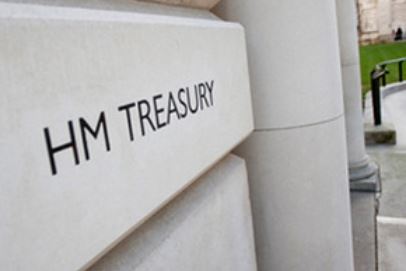Despite the global sigh of relief when rain fell on Australia’s bushfires, the damage had been done, and will take time and resources to fix. Jeremy Hughes counts the cost to the economy and to the insurance industry
Australia’s recent wildfire season officially ended on 10th February, when heavy rainfall across most of the firegrounds finally extinguished numerous blazes, some of which had burned since before November. Focus had inevitably shifted to subsequent events, with recovery efforts largely escaping the intense coverage devoted to the dramatic height of the crisis.
Starting at the peak of a catastrophic drought and exacerbated by the resulting deep-seated aridity, allied with higher temperatures and high winds, the fires in Australia’s New South Wales, Victoria, Queensland and Western Australia regions were labelled ‘unprecedented’ by a government struggling to mount an adequate response.
The climate numbers are clear: 2019 was Australia’s hottest and driest year on record, with the annual national mean temperature 1.52 °C above average with nationally-averaged rainfall 40 per cent below the average for the year at 277.6 mm. In southeast Australia, hardest hit by the fires, 2018-2019 was the driest two-year period on record. Fires started earlier than usual and continued without pause – until heavy rains in February, there was every prospect that they would burn for many more months.
While the human toll of 34 people killed may appear relatively light compared to 2009’s ‘Black Saturday’ toll of 173, 80 per cent of Australia’s population suffered an impact in some shape or form, including 57 per cent from smoke, according to a poll by the Australian National University. And while the damage to property and businesses can be measured and recovered – to some extent at least – a range of fundamental societal and ecological impacts are more difficult to quantify and may signal permanent changes to the country and its perception of itself.
Measuring the tangible costs
By 13th February, the Climate Council estimated that the fires had destroyed nearly 6,000 buildings, destroying 2,439 homes and damaging a further 1,021 in New South Wales alone. More than 11 million hectares were destroyed: the final damage to private property could amount to between A$5 billion (£2.5 billion) and A$10 billion.
Before the fires, Australian agriculture was predicted to grow by more than A$3 billion a year to become a $A100 billion industry by 2030, ranking it with mining and construction as one of the country’s vital activities. Final numbers don’t exist for the total loss of livestock, but on Victoria’s Kangaroo Island alone, 100,000 sheep and more than 25,000 cattle were killed. A comprehensive tally of the damage to agriculture remains uncertain, but it’s clear that 2019’s growth figure is likely to be severely constrained.
Even in areas the fires didn’t reach, smoke caused harm: for the South Australia wine industry, Australian Grape and Wine Incorporated estimates the cost of smoke taint at $A40 million while the NSW Wine Industry Association sees it approaching $A100 million in that state alone, taking into account the slump in wine tourism. That appears conservative given that the cost of smoke taint from 2003’s fires was estimated by Wine Australia at $A300 million.
Australia’s economy relies heavily on tourism – estimated to represent 10.4 per cent of Australia’s gross domestic product and 12.2 per cent of total employment in 2018. The tourism sector is set to lose at least $A4.5 billion as a result of the bushfires. The cost of fighting the fires, in terms of deployed human resources, equipment, consumables (including vehicle fuel, fire retardant and water) has been estimated at $A2.2 billion, with the bulk of firefighting manpower supplied by volunteer forces which were required to stay in the field for longer, and deal with fires of greater scale and intensity, than they had ever anticipated.
Indirect costs
Much harder to quantify will be the immediate and long-term impacts on Australia’s natural environment. In New South Wales, the bushfires burned around 5.4 million hectares (roughly 6.82 per cent of the state) consuming around 81 per cent of the Blue Mountains World Heritage Area and 54 per cent of the ancient Gondwana Rainforests in New South Wales and Queensland. An estimated 800 million wild animals were killed by the bushfires in New South Wales, with a probable national impact of more than one billion animals.
Perhaps the most telling measure was published by Western Sydney University’s Hawkesbury Institute, which calculated that the area burned in the 2019-2020 forest fires far surpasses historic records globally. In previous fire catastrophe years, only about two per cent of Australia’s temperate forests were burned, but in 2019/2020, a shocking 21 per cent of these forests were burnt – far above any previous historic records.
In addition, the bushfires released between 700 million and one billion tonnes of carbon dioxide into the atmosphere, such that due to the fires’ severity and ongoing climate change, replacing natural carbon stocks lost to the fires would cost in excess of A$1 billion – and if replacing lost carbon pushes carbon offset prices to European heights, the cost could amount to A$2.8 billion.
Responses
The Australian Federal Government’s initial response was delayed to some extent by the country’s political structure which places responsibility for firefighting and disaster recovery onto the states and requires state governments to formally request federal assistance. On 28 December, the Federal Government promise A$6,000 to each volunteer firefighter working for or owning a small or medium business and on 6th January, Prime Minister Scott Morrison announced a further A$2 billion in additional funds for bushfire recovery. This came alongside the formation of a National Bushfire Recovery Agency.
In addition, it pledged A$50 million for animal recovery. Morrison also pledged A$76 million in mid-January to help restore the tourism industry, with the money to come from the A$2 billion National Bushfire Recovery Fund. New South Wales’ Premier announced an inquiry into the fires on 30th January to review the causes, preparation and response to the summer’s bushfires. The six-month inquiry will examine the underlying causes of the crisis, taking into account weather, drought, climate change, fuel loads and human activity,as well as preparations, responses, communications and coordination.
For the insurance industry, ahead of a full picture of the damage, the Insurance Council of Australia committed to maximising the speed of payouts to bushfire victims with insurers committing to prioritising bushfire claims. The ICA also worked with state government in New South Wales and Victoria to streamline cleanup initiatives, ensuring fair and equitable treatment for property owners. It also established local trades registers to deploy local builders and tradespeople in the reconstruction of their communities, providing jobs and boosting local economies.
Assessors were in the field early, with major insurers agreeing to cooperate and share resources so as to hasten the claims process. By 14th February, Insurance Group Australia reported that its assessors had completed 97 per cent of assessments “to make properties safe in the impacted areas”.
In numbers
Between 8th November and 14th February, more than 23,000 bushfire-related insurance claims were made in New South Wales, Queensland, South Australia and Victoria, totalling an estimated A$1.9 billion. The vast majority of these claims (81 per cent r nearly 19,000 claims) were in New South Wales. By comparison, Australia’s previous significant fire seasons cost about A$1.8 billion for the Black Saturday fires (2009), A$2.5 billion for the Ash Wednesday fires (1983) and A$2.16 billion in 1967’s ‘Black Tuesday’ in Tasmania.
Compounding these losses, storms starting on 5th February gave rise to further damage. Sydney saw 392mm of rainfall over four days – more than in the second half of 2019 and three times the average rainfall for February, leading the ICA to declare a disaster as insurers received 10,000 claims at an estimated value of A$45 million. On 20th January parts of New South Wales, Victoria and Australian Capital Territory suffered an extreme hailstorm, resulting in 69,850 claims at a cost of A$638 million. About 70 per cent of claims were for domestic motor vehicles.
Despite support from government and the insurance industry, claimants reported difficulties in lodging claims. ABC News reported that only 75 per cent of residents in bushfire affected areas had contents insurance, while for those whose homes were lost, proving ownership became difficult if the documentation was destroyed along with the home. Consumer advocacy organisation CHOICE stated that policy definitions were too complicated, leading to delays. “There is no standard definition of ‘fire’ in home and contents insurance.
Of the 26 major policies CHOICE experts examined recently, we found problems with 70 per cent of the ‘fire’ definitions, and major issues with 25 per cent of policies.” In a poll of the public, CHOICE found that more than 35,000 Australians agreed that when a fire damages your home, being able to claim upon your insurance should be a “straightforward proposition”. The ICA responded robustly to CHOICE, stating: “Household policies are responding appropriately to claims relating to the bushfires. No concerns about policy wording as suggested by CHOICE have been raised with the ICA.” It concluded that it was “concerned that this...report may discourage property owners from deciding to be insured”.
Funding the payouts
Although the level of damage to insured property is likely to be unprecedented, the Australian Prudential Regulation Authority is confident that general insurance can cope. To ensure that insurers are able to pay “all legitimate claims to their policyholders under all reasonable circumstances”, APRA mandates minimum capital levels for insurers to hold, ensuring their resilience in times of disaster. The body shows that existing capital resilience is well able to cover current claims – particularly against the backdrop of a quieter 2018 and 2019 until the advent of the fires. APRA adds that reinsurance’s role will continue to play a key part in ensuring general insurance remains resilient, with its own function being to promote close engagement with overseas reinsurance groups.
Despite comfortable resilience levels, in the shorter term, earnings for insurers may take a hit: for example, for the second half of 2019 fire disaster claims at OUTsurance and Discovery dented parent company Rand Merchant Investments’ earnings by 14 per cent, with increased strategic spending at Discovery adding to the fall. During the period OUTsurance’s earnings decreased 12 per cent, with the ‘devastating’ bushfires in Australia severely impacting the company’s claims ratio.
Similarly, QBE’s results were hit by claims arising from the Australian bushfires when it reported an operating ratio of 97.5 per cent above its 2019 target range of 94.5 to 96.5 per cent. During 2019, QBE Insurance Group’s net AustraliaPacific catastrophe claims jumped to A$193 million from A$106 million in 2018, driven by floods on Australia’s northeast coast and the bushfires in the southeast. Unfavorable weather conditions also impacted its US crop insurance business.
Other insurers have yet to report on the period that includes the fire season but at the global level, many reported a successful Q4 2019 and full-year performance, with fewer major catastrophe losses to damage their numbers.
Worries remain for consumers in disaster-affected areas, with the prospect of future fires and floods occurring more frequently and with greater intensity due to climate change. QBE stated that as its customers looked for increased disaster cover, higher premiums may make insurance unaffordable, “especially for customers in areas more exposed to weather-related events”. Fears have surfaced of ‘red zones’ where properties are uninsurable due to the risk of fire or flood in Australia, with owners of properties subject to coastal erosion near Newcastle in NSW already reporting an inability to secure cover. This, coupled with banks’ reluctance to issue loans secured on properties in these areas, threatens significant financial strain for homeowners and businesses.
In addition, the reinsurance market foresees greater difficulty in the future: Swiss Re suggested in its outlook for the market an upward trend in rates had to continue if the reinsurance market is to be sustainable – before the recent COVID-19-driven rate cuts reversed the trend. But with a coordinated approach to risk modelling and building resilience in infrastructure and systems, the global reinsurance market currently has sufficient capacity to manage the risks.
Longer term
Australia’s largest general insurer, IAG released a report in 2019 which emphasised that Australia’s coasts face increased risk of intense cyclones pushing the annual economic cost of natural catastrophes to an estimated A$39 billion (US$27 billion) by 2050. IAG urged prioritising infrastructure capabilities, suitable land planning and appropriate building codes – measures that would also stand fire-damaged regions in good stead if implemented during the phase of rebuilding that already under way.
Accurate and sophisticated risk modelling will be required to keep pace with increasingly rapid changes in climate. It’s clear that ahead of Australia’s fires, the existing models didn’t get it right. World Weather Attribution recently reported that its analysis shows global warming made the wildfires at least 30 per cent more likely, and that should global temperatures increase to 2ºC over pre-industrial levels, the conditions that drove the fires would be at least four times more likely to reoccur.
In fact, IAG and SGS Economics & Planning estimated in 2016 that a high proportion of Australia’s economy was at risk from natural disasters: 20 per cent of GDP and 17 per cent of the population were situated in areas at high to extreme tropical cyclone risk; 28 per cent of GDP and 25 per cent of the population in areas with high to extreme flood risk; and 11 per cent of GDP and 9 per cent of the population in areas with high and extreme bushfire risk. A greater emphasis on disaster mitigation would therefore prove fruitful. As far back as 2014, the Australian Government Productivity Commission concluded: “Governments over-invest in post-disaster reconstruction and under-invest in mitigation that would limit the impact of natural disasters in the first place.”
Policy and politics
Perhaps the greatest shifts in Australia need to be broader-based than in the insurance industry alone. The latest fires sparked an angry debate between the incumbent Liberal government and the Labour opposition as ministers traded public blows as to the causes of the conflagration. The government of Prime Minister Scott Morrison was hesitant to acknowledge the links between climate change, the drought, and the fires. Significant airtime was given to the baseless notion that the fires had been caused by arsonists; a mistaken theory persisted that the high fuel loads sustaining the fires resulted from green activists opposing preventative burning.
Morrison, who drew opprobrium by holidaying in Hawaii while Australia burned, resisted making the link to anthropogenic climate change, at least in part due to his government’s high-profile commitment to coal mining as a long-term driver of economic growth for Australia.As a result, confidence in the federal government declined from 38.2 per cent in in October 2019 to 27.3 per cent by January 2020. As mentioned, the statutory requirement for the states to request help from the federal government – and the debate as to whether this could and should be overridden – made for needless delays in coordinated responses. Morrison recovered some poise with his A$2 billion support package – but his critics await his full acknowledgement of the need to address anthropogenic climate change and get to work on policies that will go further in building resilience and diversifying the Australian economy.
Until then, Australian insurers face a growing need to evolve their product offerings to respond to the prospect of more frequent disasters in the ‘Lucky Country’.
This article was published in the April 2020 issue of CIR Magazine.
Download as a PDF
Misplaced your login for magazine content? Request a reminder.
Read more features like this
Printed Copy:
Would you also like to receive CIR Magazine in print?
Data Use:
We will also send you our free daily email newsletters and other relevant communications, which you can opt out of at any time. Thank you.











YOU MIGHT ALSO LIKE